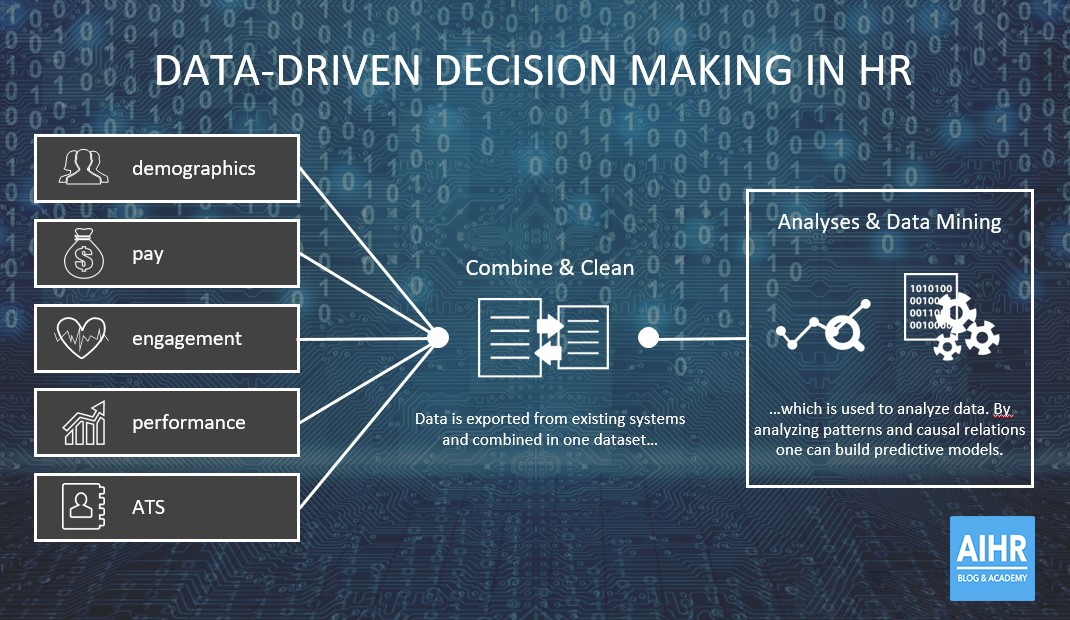Analytics is the interpretation of data patterns that aid decision-making and performance improvement. The concept of Analytics can be widely used in Human Resource (HR) management as well. HR analytics is a data-driven approach to managing people at work. HR analytics, also known as people analytics, workforce analytics, or talent analytics, revolves around analyzing people’s problems using data collected to answer critical questions about an organization. The Analytics in HR involves the application of statistics, modeling, and analysis of various other employee metrics to improve business outcomes.
HR Managers need to know and be able to explain why, what, and how it is doing what it does. It is reasonable that when we ask for resources, we need to explain what we are going to do with such resources as well as the value that we intend to produce. If we cannot provide supporting data, the management will shift focus to those tasks and activities which generate “value” to the organization.

Traditionally, human capital management provides more metrics and indicators on the processes than results that need to correct now. We need to understand that the measurement of the end result is important in professional management. Information about the past is important if it helps us understand the present and enables us to make decisions about the future. The major benefits of using HR analytics can be summarized as follows;
- improves HR performance
- helps in identifying best performing talent
- helps in identifying the attrition and its causes
- helps to predict demand for skills and positions within the organization
Thus, HR Analytics helps to transform the role of HR manager as a strategic partner. Further, HR analytics demonstrates the causal relationship between the activities exacted by an HR department and the business outcomes. Once this causal relationship is discovered, HR analytics professionals can devise and implement a strategic plan to assist the business in attaining better outcomes. We need to focus on the following metrics while devising HR Analytics in an organization.
- Starting with the End in mind – An organization must first determine the top two to three most critical outcomes on which to focus. Example outcome variables can be productivity, turnover, customer satisfaction, cost, safety data related items, etc.
- Represent outcomes using numbers-Next, determine how the data is currently captured in the organization. Each outcome measure must be assessed in terms of frequency, level of measurement (by business unit, by the manager, by function) and the owner of each of the outcome measures. The goal is to have apples-to-apples comparisons of the data—which means that if you want to look at productivity numbers, you need to have productivity data that is measured at the same interval (e.g., monthly) and at the same level for each manager.
- Objective Analysis of critical and key data-This requires advanced statistical knowledge to link the data. These data are critical when triaging analytical opportunities. Triage is the process of examining available analytics opportunities to determine which should receive priority. By examining the data on the level and distribution of existing outcome data, it is possible to identify where there may be opportunities to raise the average outcome or shift the distribution of outcomes. Also, structural equation modeling helps to determine, for example, whether employee attitudes about work-life balance are a cause-and-effect driver of increased customer satisfaction.
- Identify available intervention options and their costs-At These action-planning stage focus activities at the systemic, organization-wide, line of business or work-unit level. The investment focus should be on those employee processes/skills/attitudes/ demographics, which have been shown to have a direct impact on the organization’s desired business outcomes.
Measure and Adjust/Re-prioritize- In the last step, re-measure to assess progress and calculate actual return-on-investment. Business leaders understand the importance of goal setting and measurement. They also understand the importance of creating a culture of measurement and accountability. Like other organizational decisions, leaders should make slight adjustments to initiatives along the way based on regular measurement results.


